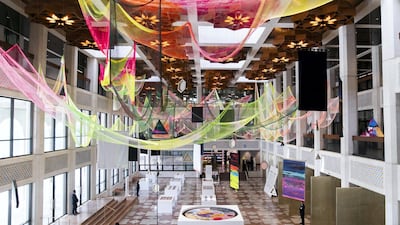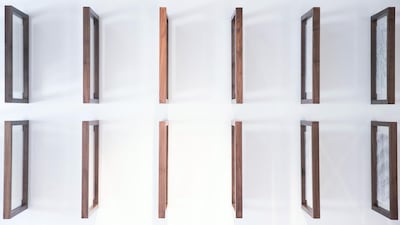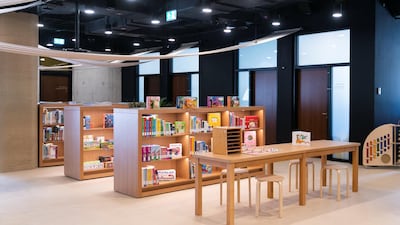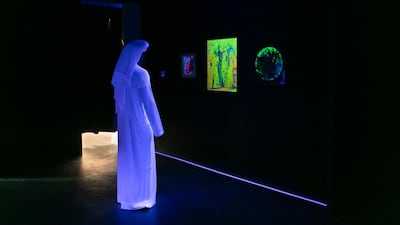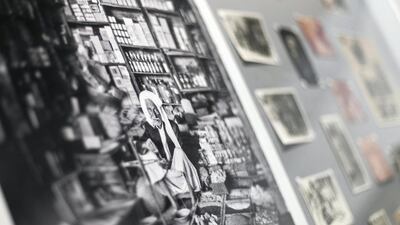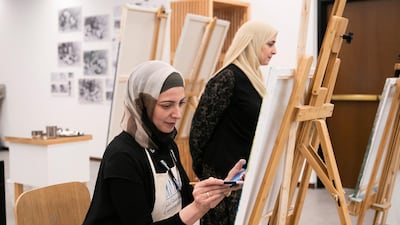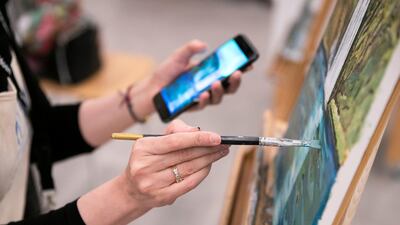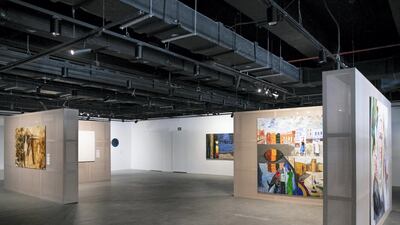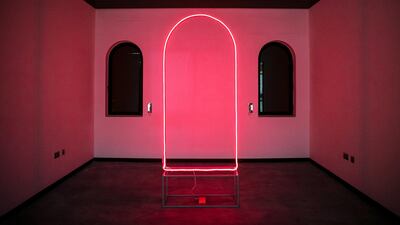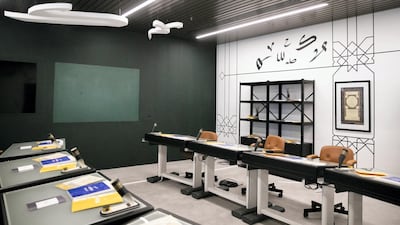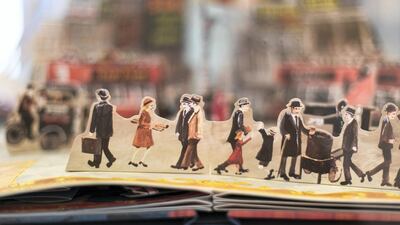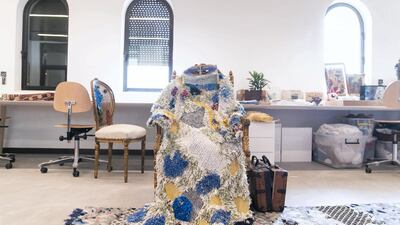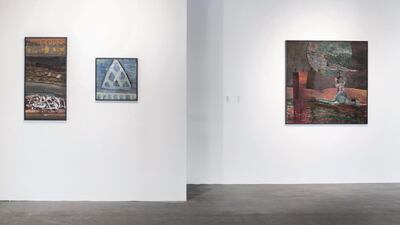Imagine scaling a mountain of books, swinging on a rope over a pond of letters or starring in your own comic strip.
For the children of Abu Dhabi, these dreams will come to life as the Cultural Foundation, in the capital’s oldest historical site, has reopened its halls after 10 years of renovation.
Its first season of exhibitions and performances will begin when the renowned Iraqi musician Naseer Shamma plucks the first notes of his oud in the capital’s oldest auditorium.
The revamped 900-seat theatre and Abu Dhabi Children’s Library were among the spaces inaugurated on Wednesday by Sheikh Khalid bin Mohamed, member of Abu Dhabi Executive Council and chairman of the Executive Committee.
“Abu Dhabi’s strength as a cultural hub is the deep link between our history and future aspirations,” he said. “Investment in immersive learning spaces like this will develop the young leaders of the future.
“The Cultural Foundation, situated next to Abu Dhabi’s oldest landmark, Qasr Al Hosn, is the manifestation of the vision of our late Founding Father, Sheikh Zayed, who set the cornerstone for a modern nation while equally preserving our heritage and history.
“With the completion of renovation work at this significant site, Abu Dhabi’s communities and visitors will enjoy even greater access to culture, arts, literature and learning experiences that enrich, educate and entertain.”
For many, it will be a homecoming to a three-storey building that was the heart of Abu Dhabi’s fine art community from 1981 until it closed its doors in 2008. When it opened, it was the only cultural venue in town.
Visitors will find the familiar: the same yellow and blue tiles brighten the walls, the same sweeping arcades give shade. Inside, guests will discover new galleries, a restored auditorium and a children’s library where children can play on soft, foamy sand dunes, wander between enormous wooden camels or crawl into the cab of a radio Land Rover.
To the right of the make-believe desert, Emirati children’s books are brought to life with life-size illustrations drawn from the children’s books of Ras Al Khaimah author and illustrator Maitha Al Khayat.
“We actually designed it like a pop-up book,” said Michell Hackwelder, manager of the Children’s Library.
“When you’re small, your point of view is very low and you look up and as you walk along I think you’ll see some things very tiny for the child’s sense of being folded in intimate and immersive spaces and then some things larger than life.”
There are already 35,000 books in Arabic, English and French and capacity for 40,000 more. These will include languages such as Urdu and Malayalam to reflect the surrounding community of Abu Dhabi.

Though immense, it is a place of intimate spaces. There are soft nooks and crannies where children can escape into a good book, sit with parents in a toddler pen or disappear inside a circular, semitransparent room shelved with large toy animals, skeleton replicas and even a few terrariums. This is the headquarters for the eco-warrior club, a group for children who can meet to learn about nature and the planet.
Older children can raise above the palms and climb up the stairs of the ‘book mountain’, a pyramidal book shelf that rises to the second floor. Here are books for children ages 11 to 14, and a healthy supply of comic books and graphic novels.
“Comics are a way to get reluctant readers to read,” said Ms Hackwelder, stepping between giant comic speech bubbles and hashtags.
The multistorey children's library is just one side of the foundation building. At its centre is an atrium filled with art by Najat Makki, the first Emirati woman to study art abroad and considered the UAE's first female professional artist. Fishing nets, dyed fluorescent yellow and pink, sway ceilings. The exhibition, titled Luminescence, even glows in the dark.

Fittingly, the art galleries surrounding the atrium hold an second exhibition dedicated to Ms Makki, who mentored many of the young country’s artists in the decades after its formation. “Najat was chosen because she’s the obvious choice,” said Reem Fadda, director of the Cultural Foundation. “No one is more deserving.”
Around the corner is the calligraphy. Giant Arabic letters danced across the walls, the floor, the glass door of the calligraphy classroom. This will be the sphere of Mohammed Al Mandi, the celebrated Emirati calligrapher who designed the calligraphy on passports of the UAE, Bahrain, Oman, Qatar and Kuwait, and at Sheikh Zayed Grand Mosque.
Mr Al Mandi himself was there for the centre’s reopening. “My calligraphy is even in your pockets because I wrote the letters on the dirham,” he chuckles. It is his favourite joke.
It is a return to the place where he worked for decades until 2006.
“This will be my last place,” says Mr Mandi. “I won’t move again. It will be up to the next generation.”
Opposite is Marsoom Al Hur, artists' studios for classes including painting and jewellery. Walking among its halls are Emirati artists who were regular visitors to the Foundation as children.
“I was one of the kids who came and participated in dances in the theatre,” said Aisha Al Humeri, 29, an artist who now works at the Foundation.
"At the openings of the book fair, I was one of the kids who would hold the cushion for the sheikhs to cut the ribbon. We lived in in here. We watched our Disney movies in here. I remember watching The Lion King here for the first time. And so, it was basically my childhood and the dream of being an artist it was the place where it became real.

“All my life I loved the arts, and it started because of this place.”
The children’s library will be open Saturday to Thursday from 10am to 8pm, and from 9am for schools. On Fridays, it is open from 12noon to 10pm.
For more information on classes, exhibitions and events, visit culturalfoundation.ae or call 02 697 6803.
